Let’s talk...
About the child’s opinion:
Mr. Round and Mr. Square see things in contrasting ways. We can ask our child: Are things really contradictory? How do you see it? Do you think the dog is first or last? Is the car really moving away or coming closer? We can encourage them to use expressions like “it depends on” or “according to,” to stimulate seeing things from multiple angles.
Similar experiences: we can ask our child: Have you ever disagreed with a friend?What was that like?
Let's stimulate thinking...
We can look at household items and describe them from Mr. Round’s and Mr. Square’s perspectives, for example: I see a wall behind the TV, or a TV in front of the wall. Let’s describe other items using different expressions like: in front-behind, above-below, or any other appropriate expression.
Let’s enrich our language...
The story is full of opposites, such as: near-far, first-last, bright-dark, and others. We can find them and use them to describe what’s around us.
Let’s create...
We can draw several circles on one paper and several squares on another, then create shapes and drawings from each circle and square.
Let's play...
We can compete to collect the largest number of items in our house that contain different shapes: circle, square, dots, parallel lines, and others.
Let’s talk...
About Friendship: We can ask our child: What does the word friend mean? How do we become friends? Who is your friend? And why are you friends? What do you like to do with them? What are the things you are similar in, and what are the things you differ in? What distinguishes your friend? And what is the thing you love most about your friendship?
We can also share with our children and tell them about our experiences with childhood friends.
Let’s enrich our Language...
We follow the movement of the yellow and blue spots in the drawings: When do they get closer? When do they move away? When do they blend? When do they grow and when do they shrink? We ask our child for their opinion on this.
We pay attention to the opposites in the story’s vocabulary.
Let's communicate...
We can invite our friends for a nice visit to our home and spend an enjoyable time together.
Let’s create...
The artists used the printing technique. We can dip half a potato, or a flat eraser, or a piece of sponge in “gouache” paint and make a stamp. We can print shapes of different colours on paper, and we may complete their small details with the help of a pen.
Let’s talk...
About the title: What distinguishes a hotel from a house? Are there other words with the same meaning? How should we behave in a hotel?
About differences: People and animals have different needs, and the girl and her mother tried to accommodate the rooms accordingly. Let’s follow the drawings, discuss the needs of each visitor, and explore how the girl responded to them.
About personal traits: we can ask our child about the girl’s qualities and how they manifested in her actions. We can also discuss our child’s unique qualities compared to siblings or peers and how they are presented in their behavior.
About fostering responsibility and a sense of belonging: we can talk to our child about the roles they enjoy taking on at home and the roles each family member plays. We can emphasize how these roles express real responsibility and a sense of belonging.
About solving problems creatively: we can recall situations at home that required unconventional solutions, and how we successfully overcame them together. We can explore further by researching information about the animals mentioned in the story and their characteristics and habitats.
Let’s explore...
We can search the encyclopedia or the internet for information about the animals mentioned in the story, about their characteristics and how they live.
Let’s create...
The book’s illustrations beautifully capture the harmony between the setting and the different character traits. We can delve into the charming details of the drawings, create or design rooms for other animals based on their features.
Let’s communicate...
We can take a stroll around town and look for signs indicating accessibility for people with special challenges. We can take their picture with our phones and discuss their importance for inclusivity in general.
Let’s talk...
About feelings: we can read the story with our children and talk about “Tala” and “Fadi’s” feelings from the beginning to the end. We can ask our children: How did they feel and how did these feelings change?
About new beginnings: we can share our feelings about new beginnings with our children, such as the first day of school or joining a new club. We can ask our children about their feelings in new beginnings: what makes them feel secure, and what helps them overcome feelings of fear or dread. We can remind them of situations where they adapted successfully.
About friendship: “Tala” was able to form a friendship with “” We can follow the text and illustrations with our children and ask them how that friendship formed, what they did together, and how friendships are made. We can also ask our children who their friends are and what they to do with them.
Let’s play and work together...
We can initiate a fun and shared activity, such as recalling things we love to do together, like going on a family picnic, reading a book, or preparing a favorite dessert and more. We can try to allocate time during the week to enjoy an activity or more with our child.
Let’s explore...
We can explore and learn about pets and how we can take care of them at home, and about the relationships that form between the animal and its owner.
Let’s communicate...
We can invite one of our child’s friends to visit our home or participate in a shared activity, like a park trip, to strengthen social relationships and support them in building friendships.
Discuss...
The title: we should ask our children what does “the invisible girl” mean? We should follow the drawings and ask the children, “What has made the people in the story invisible?”, “How did their lives change, and how did they become visible”?
Exclusion and bullying: with the children, review situations in which they, or one of their friends, were bullied. How did they feel? How did they act? We must suggest together other ways of dealing with the mentioned situation.
Deprivation: many characters felt they are deprived of many things, such as friendships, money, and the ability to walk. We must talk to our children about the things that we have, but others don’t, and about things that we don’t have but others do.
Connect...
Volunteer: think of a person you know who needs help, or an institution in which we can volunteer. Make volunteering a family ritual.
Isabel relied on her parents’ experience, expertise, and close relations to regain her energy and abilities to change people around her. Prepare a box of cards and write family activities you can do together to make you feel happy and close. Choose a different card each time.
Act...
Review with the children a situation in which they have been excluded. Role-play and re-enact the situation and the dialogue.
Let’s talk...
About feelings: We follow the written text and drawings, accompanying the bear on his journey from the forest to the city, and talking about his feelings and thoughts, as well as the feelings of friends and family. We can talk about feelings of loneliness, longing, anxiety, pride, a sense of ability and self-fulfilment as well. Enriching our child’s dictionary so that they can be aware of their feelings and express them while reflecting these feelings through their behaviour.
About perseverance and realization of dreams: After many attempts and for a long period of time, the bear was able to play successfully. With our children, we can share a goal that we have persevered for and achieved, and we can ask them what goal or dream they would like to achieve as well. We then plan together how they can do so.
About their preferences, talents, and abilities: The bear discovered his inclinations and talent for playing. We can talk with our children about their inclinations and abilities and ask them about the things they like and can do. We can support and accompany them to discover them and emphasize them.
Let’s communicate...
We can enrich the experience of our children, and together, we can watch a musical or theatrical performance and talk about it.
Let’s enrich our language...
The story is rich in beautiful and new linguistic vocabulary, such as: aspire; issued; overflowing with happiness; shivering. We can explain these words to our children while reading, and we can talk about them afterwards as well.
Let’s have fun together...
The great Arab musician and composer Omar Khairat succeeded in achieving fame by composing many songs. We can search the web for his songs, and we can listen to them with our children and have fun.
Let’s explore...
With our children, we can search for people who have achieved their dreams (researchers, artists, athletes…). We can explore their childhoods and listen to interviews with them.
Let’s talk...
Drawing the monster: Before reading, we can ask the children to draw a monster, describe its shape and colour, and ask: What scares us about it? How does it live? Which languages does it speak? When do we see it? Then we can read the story and compare between the monster we imagined and the monster in the story.
About our desires and tendencies: Both the child and the monster were sensitive to each other, and each got to know the other’s desires and needs while preparing for the meeting. We can follow the child and the monster in the story and learn about what each of them wanted and required and how they prepared for the meeting. We can ask our children: How do we prepare to receive a guest?
About Preconceptions: We can follow the thoughts that the child and the monster had about each other and talk about what they found in reality. We can ask our child about our perceptions of others. How are they made? Is our perception of others always correct? We can compare preconceived notions with reality.
On friendship and difference: The monster and the child are different, but they manage to become friends. We can ask our child: Do you have a friend? How are they similar to you? How are they different from you? What are the things that you two do together? What are the things that both of you do alone?
Let’s act...
We impersonate the characters of the story: “the child and the monster” and act them out. We can invite our child to think, feel, speak, and express themselves in the same way.
Let’s communicate...
We can write a letter: The power of the letter stands out in the text. We can help our child to write a letter in which we express our opinion about the book, and we send it via e-mail to the Al Fanous Library project.
We can chat...
We can chat about how Edward the giraffe feels about his neck. Why did he feel like this? What helped him accept his neck and see its benefit?
We can think...
What do we like about animals? We can think of different animals, and take turns completing this sentence: What I love about the elephant/the dog/the ant is…because…
We can talk...
We can talk to our child about the qualities they do not like and that bother them about themselves. It is important to support the child in seeing what these characteristics allow (for example: being small in size enables them to enter confined spaces). We can also talk about other qualities that they love about themselves.
Turtle helped Edward...
Turtle helped Edward the giraffe to love his neck. Which friend makes us feel loved? Which friend makes us feel happy?
We can look...
We can look in the mirror and describe what we see: short straight hair/wide brown eyes…
Edward is in...
Edward is in our house! We can create a model for Edward’s neck from a long cardboard cylinder, and search our wardrobes for different ties that we can we can wrap around it.
We follow everyone...
We follow everyone who gets under the umbrella. What does their appearance tell us about them? We think about others who may get under the umbrella
The umbrella becomes...
The umbrella becomes larger gradually to include everyone who seeks refuge under it. We try this by opening our arms like a hug. How many people can we hug if we open our arms slightly? What if we open our arms as wide as we can?
We look at...
We look at the park in the last pages of the book and imagine that we visit this park. Who do we see there? With whom do we like to go to the park? What do we like doing there?
We talk about...
We talk about things we do in our family to display our love and concern to each other, such as doing home chores, or preparing our favorite food, or doing a fun family ritual.
The family umbrella...
The family umbrella: we draw a simple umbrella on a cardboard sheet and cut it. We draw and cut the shapes of a boot and a raindrop. Then, we give each family member one clipping of each shape. Every member writes his/her name on the boot clipping and sticks it under the umbrella, and writes or draws one thing he/she is afraid of on the raindrop (such as the darkness, or certain animals) and stick it around the umbrella. Eventually, we will get a fantastic board to hang. We may want to write beneath the board statements like: “We feel happy and safe under our umbrella.”
We cut fruits...
An umbrella on my plate: we cut fruits and vegetables such as apples, pears, carrots, cucumbers into half circles and little sticks and form colorful umbrellas out of them. In addition to all the fun and play, the children learn about shapes and eat a healthy meal!
We turn...
We turn the pages of the book together. Which character resembles us today, and how? We may find that the character we identify with changes every time we read the book.
How are we...
How are we similar and different from the rest of our family? On a large canvas, we can glue a picture of each family member. We draw or remove pictures from magazines and newspapers of things or activities that we share, such as food we all enjoy, or a place we like to visit, and stick them on the canvas. In addition, we draw or search for pictures that express the difference between us, such as: preference for quiet or noise, sleeping early or staying up late, etc.
We can play...
We can play the game of opposites: we say an adjective aloud, such as: fast, cold, etc. and our child should say the opposite of the word. We can discover that a word may have more than one opposite!
We can stand...
We can stand with our child in front of the mirror and explore our similar features. Do we have the same eye-color? Or maybe the same eyebrow shape? We take turns creating and mimicking funny facial expressions. Which expressions made us laugh the most?
We sit in...
We can play the game “Imitate Me”: we sit in a circle, and the first player has to make a certain move. The second player imitates them if he likes the move, and if he doesn’t like it, he makes a new move, and so on. What moves do all the players like?
Consider the cover...
Consider the cover of the book: how do the drawings illustrate the title?
When reading aloud...
When reading aloud, we can pause every time we come across the phrase “extra yarn” and we can encourage our child to say it with us. This helps them become more engaged in the storytelling in an enjoyable way.
The townspeople...
The townspeople and Annabelle’s classmates mock her, but instead of getting angry or sad, she responds by knitting sweaters for them. We can chat with our child about the impact of Annabelle’s reaction. If we had been in a similar situation, how would we have acted?
Together, we can...
Together, we can imagine the journey that the magic box took to return to Annabelle. What did it encounter on the way?
If we found a...
If we found a magic box, what would we like to find in it? What would we do with its contents?
Annabelle took...
Annabelle took the initiative to redecorate her town with her colorful yarn. With our child, we can think of simple ways that can make our neighborhood more beautiful, such as planting some roses in front of our house.
There are many...
There are many beautiful and easy crafts that can be made with children. What do you think of an art workshop in which family members participate?
Let’s stop at...
Let’s stop at the first page when the strange animal appears in front of the other three animals. Why do they see him as strange? Which people do we see as “strangers”? Why?
On page 9...
On page 9, there is a discussion among animals about breaking the suitcase. The fox insists on breaking it and knowing its contents, while the rabbit refuses. We can chat with our child about their respective motives. Does he choose to be a fox or a rabbit in this situation?
Let’s imagine together...
Let’s imagine together the story from strange animal’s perspective. Why did he leave his home to reach a new place? What did he encounter on his way? How does he feel when he is away from home? Do we know people like him?
The animals support...
The animals support the stranger by welcoming him among them and building him a house to replace the one he lost. How can we support people who left their country and their home, perhaps willingly or by force, and came to us?
For the strange animal...
For the strange animal, a home is a place where one feels safe, comfortable and loved. What does home mean to our child?
Together, we can...
Together, we can look at the two pictures hanging on the wall on the last page. We can talk about the differences between them. What do the colors tell us in each picture?
If we want to...
If we want to travel to a remote place for a long time, what do put in our suitcase? Our child can draw the things they take with them.
Some pictures are...
Some pictures are dear to our hearts and we keep them or carry them with us wherever we go. It’s nice to sit together as a family, and share these special pictures together.
While we read...
While we read the book together, we can look at its drawings. We may stop at pages 6 and 7 and learn about the animals that appear from the windows with their owners. What do the faces of their owners show? And what do the expressions on the face of the child who appeared with his elephant say?
We may want...
We may want to stop on page 16 and read the letter on the sign aloud. What does this sentence mean? And why are elephants prohibited from entering the club? How does the child and the elephant feel? We may want to encourage our child to think about what he might do next.
Together, we can...
Together, we can learn about the animals which appear in the book. Can we keep them all at home? If we were to keep a strange animal at home, which animal would we choose? We may want to draw it.
If we are keeping...
If we are keeping a pet at home, what do we like about it? What do we like to do with it?
Because this is what...
“Because this is what friends do …” We can chat with our child about their different friends: What does s/he like to do with them? We may want to tell our child about our friends, too. It would be fun if we could invite family friends, of all ages, for a fun activity together.
Our child may...
Our child may want to design a sign that they can hang on the door of their room which welcomes all their friends. Family members may wish to participate in designing a sign at the entrance to the house that welcomes all guests.
In which seasons...
In which seasons of the year do the events of the story take place? What do the illustrations tell us about each chapter?
What did we see...
What did we see when you read the story for the first time: a duck or a rabbit? Did our child see the same drawing? Which is easier for us to see in each drawing: the duck or the rabbit? If we had to decide the identity of the animal in the book, would we have chosen the duck or the rabbit?
We can look...
With our child, we can look at the drawings, and follow the attributes and actions of each creature with them. For example, the beak of the duck and the ears of the rabbit, the duck flies, and the rabbit jumps. We can think together about other features and actions that our child may wish to draw.
We can play...
With our child, we can play the game “What is hidden in the drawing?”: Each participant draws an abstract drawing (which may be random lines) and another participant tries to distinguish something familiar in it, then looks at the drawing to highlight it.
What happens when...
What happens when the other player does not succeed, or does not accept, to see what we see? We can show our child drawings with optical illusions (drawings like this can be found on the Internet or on the book’s page on the Lantern Library website). We can then have a conversation with our child about what they see.
The perspectives change...
The perspectives change at the end of the book; Whoever sees a duck in the beginning sees a rabbit, and vice versa. Have we ever had a change of mind following a different point of view? How can we convince others to see reality through our own eyes?
On the first page...
On the first page of the book, there are clouds of different shapes and sizes. Can we distinguish familiar shapes in them? It would be fun to go out and look at the clouds in the sky: what do we see?
When the bird...
When the bird tried to take part in the auditions, he was refused and picked on. We can talk with our child about the bird’s feeling. Does the child experience similar feelings when he/she tries to play with a group of friends in class, or to take part in a family event?
The little bird...
The little bird did not give up but tried again and again to show his talent. We can encourage the child to think of different ways for the bird to show the band his talent.
We can think...
We can think if a close family event (a party or hanging with friends, or a trip). How can our child help? And how can we make it easier for him/her to help?
Music, beat, playing...
Music, beat, playing, singing, songs, these are some musical words the text includes. We can recall some other musical words that our child knows.
Our family is talented...
“Our family is talented!” it a name for a talent show that you and all your family can put on. It can be fun to arrange such a program with your child, arrange the stage and give out prizes to each other!
Kharbush prepared...
Kharbush prepared a small bag and left home. Why did he do that? A lot of children go through the same experience, so they “leave” home with their things to the garden, or to the neighbors’ house, if they feel really bad. This is a good opportunity to talk to our children about these incidents: what do they feel, what do we feel as parents, and how can we together overcome these feeling?
It is common...
It is common for children to feel discouraged at lacking a skill that other children possess. We can calm such concerns by discussing with our child the growing process and all the abilities he/she has already acquired. It helps the child to see himself on a continuum as a growing and changing human.
We can read...
We can read the title “My Cheek is Like a Rose” and have a conversation about it: what is similar between the cheek and the rose? We can encourage children to think about different things which are similar to their cheeks, and cheeks of other family members.
We should read...
We should read the poem slowly, in order to help him understand the words and to notice the rhythm, and we can have a conversation about the poem and its characteristics (the rhythm, short sentences).
We can draw...
We can draw two children, happy and sad children, and then to cut them and try to encourage the child to express himself regarding these two children by using verbs such as I love, I hate, I’m afraid, I ask.
Some sentences don't...
Some sentences don’t really express the child’s feeling, such as the sentence “when my grandpa died”. We can have a conversation about the child’s feeling when someone dear dies.
The connection between...
The connection between the text and the illustrations is not always clear, sometimes it directly describes the text, but sometimes the drawings describe the text using metaphors. The illustrator adds colors to express positive or negative feelings according to the text. We can have a conversation with our child about the illustrations and what meanings do they contain.
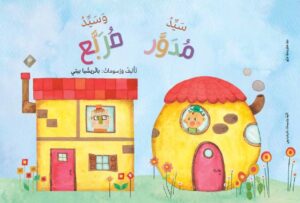 Mr. Round and Mr. Square
Mr. Round and Mr. Square 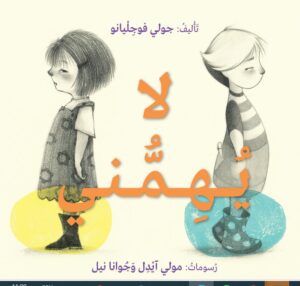 I Don’t Care
I Don’t Care 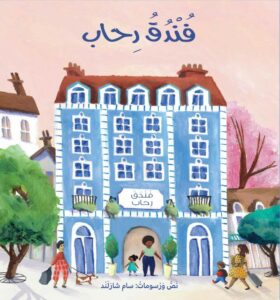 Rihab’s Hotel
Rihab’s Hotel 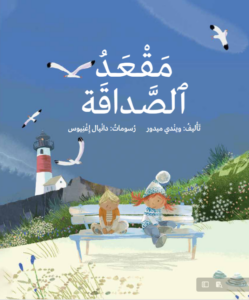 Friendship Bench
Friendship Bench 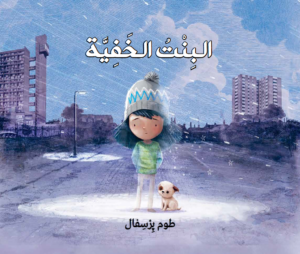 The Invisible
The Invisible 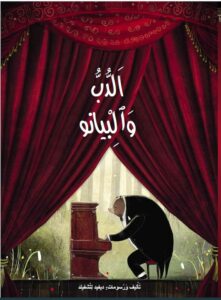 The Bear and the piano
The Bear and the piano  A Monster wrote me a Letter
A Monster wrote me a Letter 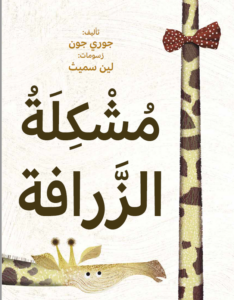 Giraffe Problems
Giraffe Problems 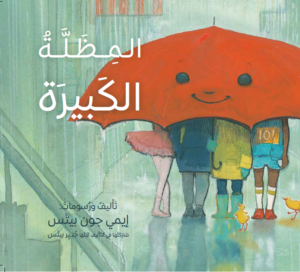 The Big Umbrella
The Big Umbrella 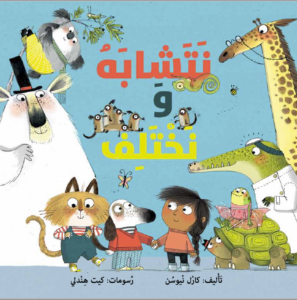 The Same but Different
The Same but Different  Extra Yarn
Extra Yarn 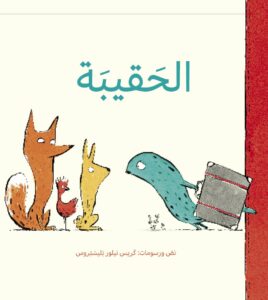 The Suitcase
The Suitcase 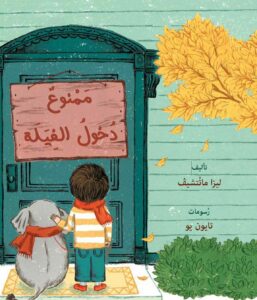 Strictly No Elephants
Strictly No Elephants 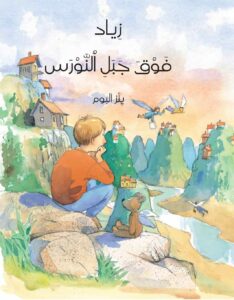 Ziyad on the Seagull Mountain
Ziyad on the Seagull Mountain  Emanual’s Dream
Emanual’s Dream 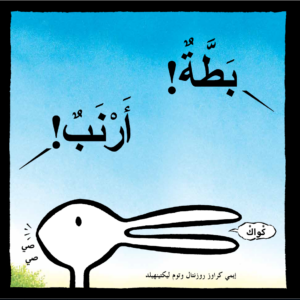 Duck! Rabbit!
Duck! Rabbit! 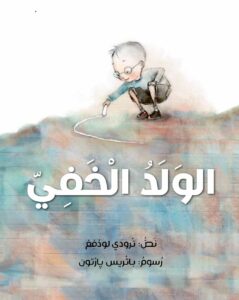 The Invisible Boy
The Invisible Boy 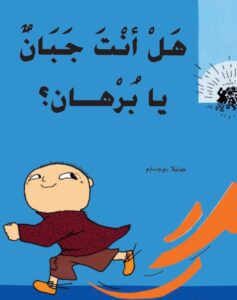 Burhan, Are You a Coward?
Burhan, Are You a Coward? 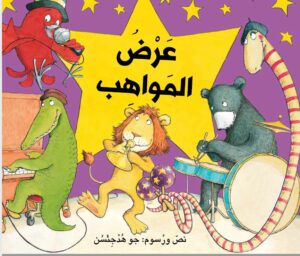 The Talent Show
The Talent Show  Doodle
Doodle 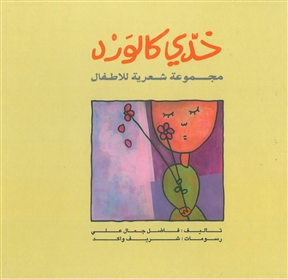 My Cheek is Like A Rose
My Cheek is Like A Rose 
